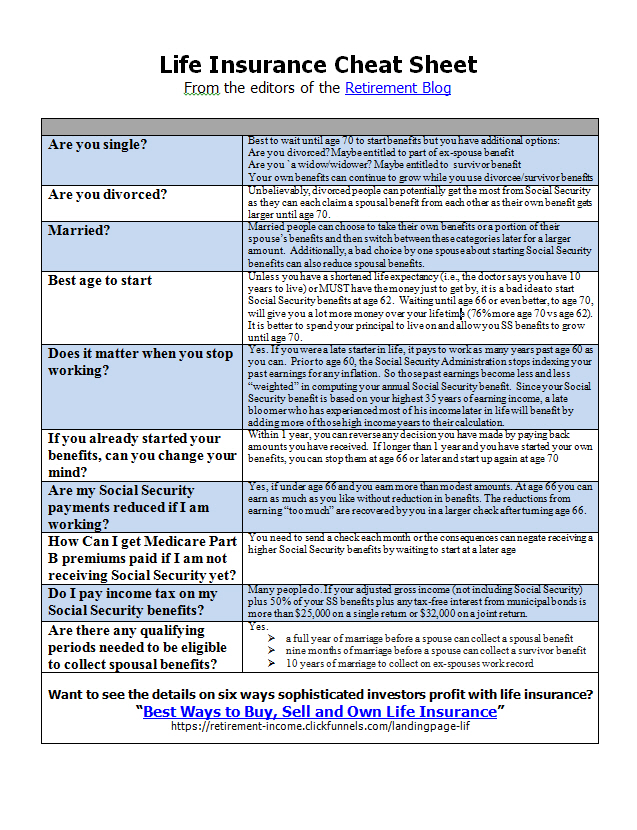If you do not qualify for group health insurance through your employer or an association you can join and are not drawing on Medicare, then you are eligible for medical insurance that can also qualify as a retirement savings vehicle. Created in 2003, these self-directed plans are called Health Savings Accounts (HSAs). They allow for annual tax-deductible contributions that can be invested in stocks, bonds, mutual funds, annuities, or virtually any other type of investment vehicle. These savings account must be paired with a high-deductible medical insurance plan. The medical plan will have a modest premium because routine expenses are not paid by the insurance but rather, by money you use from your HSA.
In general, this pairing of a high-deductible medical plan and the HSA is best suited for younger people and those who do not make much use of doctors and medical facilities.
However, unlike IRAs or other types of retirement plans or accounts, you can withdraw the money from your HSA at any time (including before age 59½) in order to cover the cost of any type of qualified medical expense. Qualified expenses for HSAs include virtually any type of medical expense, including doctor's visits, hospital bills, lab fees, dental work, eyeglasses, medications, hearing aids, long-term care, etc. The list of qualifying expenses is liberal. However, beginning in early 2011 OTC (over the counter) medications cannot be paid with HSA dollars without a doctor's prescription.
| Year | Contribution Limit (Single) | Contribution Limit (Family) | Catch-Up Contribution (55 or older) (Single and Family) |
|---|---|---|---|
| 2013 |
$3,250
|
$6,450
|
$1,000
|
If you don't use any part of your contributions for medical costs, then the balance accumulates juts like and IRA and can be used after age 59 1/2 as retirement funds.. Best of all, there are no income or age limits for anyone wishing to make tax-deductible contributions, which are a huge benefit for high-income savers or those that also contribute to any other type of retirement plan.
As mentioned, these plans do require the participant to be covered under a qualifying high-deductible health plan, which has a higher than normal deductible and tends to cover only the more catastrophic health issues.If you terminate your high deductible plank, you cannot make addition contributions to your HSA but the balance in the account will continue to grow.
Typical medical insurance require payment of premiums (which are often higher than qualifying high-deductible policies) regardless of whether a claim is made or not. Therefore, for those who qualify these plans offer an advantage; the guarantee that the money they spend to cover medical costs will not go to waste, regardless of whether any medical bills are actually incurred or not. This feature effectively resolves a huge dilemma for those who are struggling with health or medical uncertainty, and are trying to decide whether to invest in more insurance or simply increase their liquid assets.
Conveniently, you will not have to itemize deductions on your tax return in order to get the contribution deduction. Ultimately, these plans offer an enhancement to the traditional retirement savings income limitations if you are attempting to maximize your retirement savings. The contribution limits are indexed for inflation and vary according to whether you are single or have a spouse or family.
Sometimes, you can use funds from an HRA plan through your employer to get an HSA or check www.ehealthsinsurance.com for rates on HSA paired plans.

Leave a Reply